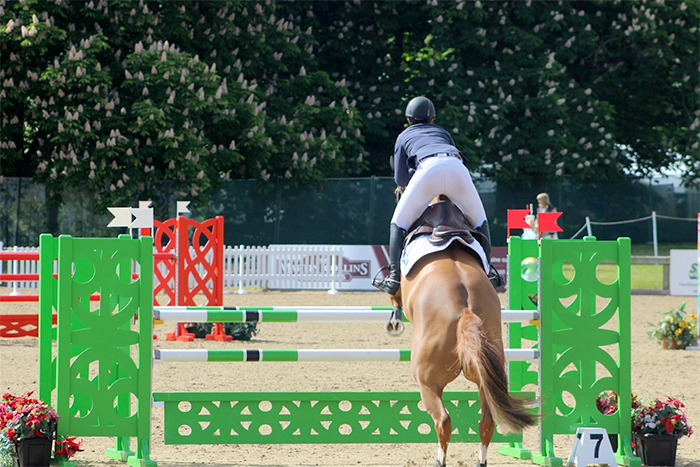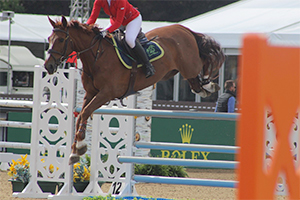Blog
Inside Equestrian: Walking a showjumping course
Wednesday, 18 July 2018
Walking the course is one the most important parts of showjumping. This is the athlete’s opportunity to measure out the distances between the fences and figure out where they can save those all-important seconds. They have to think about what lines they can take, how the course will suit their horse and also, if there is anything in the arena that may spook their horses. This could be something as simple as flowers, advertising banners or course building materials.
Here’s our guide to the kind of fences you can expect to see on a showjumping course.
Watch our ‘exploring: a showjumping course walk’, where we walked a national course at the Royal Windsor Horse Show with World Class Programme Performance Manager, Di Lampard. Some of the fences featured in the video are referenced below (*exploring video = *EV)
Vertical
A ‘vertical’, or an ‘upright’, consists of just one set of poles or planks placed one directly above another. Planks may be used to make a fence appear more solid and this can make the horse back off which it makes it more testing for the rider.
*EV: jump 2, 3, 5, 7, 8, 11
Oxer
An ‘oxer’, or ‘spread’, is an element that is made up of two sets of poles or planks otherwise known as rails. The width between the poles may vary. There can be different types of oxers such as:
- Ascending – where the front rail is lower than the back rail
- Parallel – both the front and back rail are even but the jump is higher than it is wide
- Square – a parallel oxer where the jump’s height is the same as the width
- Swedish – where the front and back poles slant in opposite directions and form an ‘X’
- Hogsback – comprises of three rails but the tallest pole is in the centre

*EV: jump 1, 4, 9
Triple Bar
Similar to an oxer, except this type of fence is made up of three rails rather than two and the height of the rails increase in height from the front to back. These are wider than oxers in relation to their height and require more pace from the horse and rider in order to clear the distance of the jump.
Walls
Most famously known through the Puissance (a high jumping competition), this fence is made to look like a brick wall which can be quite intimidating for the horses but they are made of lightweight materials so they fall easily when knocked or brushed by a horse.
Water jump
A water jump is a tray of water that challenges the horse and rider to jump wide rather than high. A small fence is used to mark the take off point on the approach to the water, with a white tape positioned on the landing side, which the horse must clear and land beyond.
 Liverpool
Liverpool
This element contains a water tray however; this tray is significantly smaller than one for a water jump and is placed underneath an oxer or a vertical fence.
*EV: jump 12
Combinations
A combination is an element which features two or three fences in a row with no more than two strides between each fence. This may include the same type or different types of fences.
*EV: jump 6, 10
Jokers
These are unpainted fences and look quite rustic. These are mainly found at the highest level of competition and are particularly hard to combat as it is difficult for the horses to see the poles or rails.
Commentary notes:
- Element – a fence on a showjumping course
- Pole – the beams that the horses jump over
- Rail – one pole
- Stride – these refer to the horses’ stride and these are used to measure the distances between the fences. Four human strides equal one horse stride.
- Green – a horse will be referred to as ‘green’ if it is a young horse in training
- Against the clock – refers to a showjumping competition that is timed. Riders will ‘ride against the clock’ to try and jump a faultless round in the fastest time.
- Clear round – when a combination makes it round a showjumping course without incurring any faults
- Refusal – when a horse refuses to jump a fence – two refusals and the horse and rider are eliminated from the competition
- Faults / Penalties – a penalty is awarded for knocking down each fence, a refusal or any time faults
- Jump-off – this is a deciding round against the clock that happens when multiple combinations share the same score at the end of the first round
Latest Blogs
- 05 September 2021
- 02 August 2021
- 25 July 2021
- 21 February 2020
- 31 August 2019
- 30 August 2019
- 28 August 2019
- 25 August 2019
- 24 August 2019
- 23 August 2019
- All Blogs